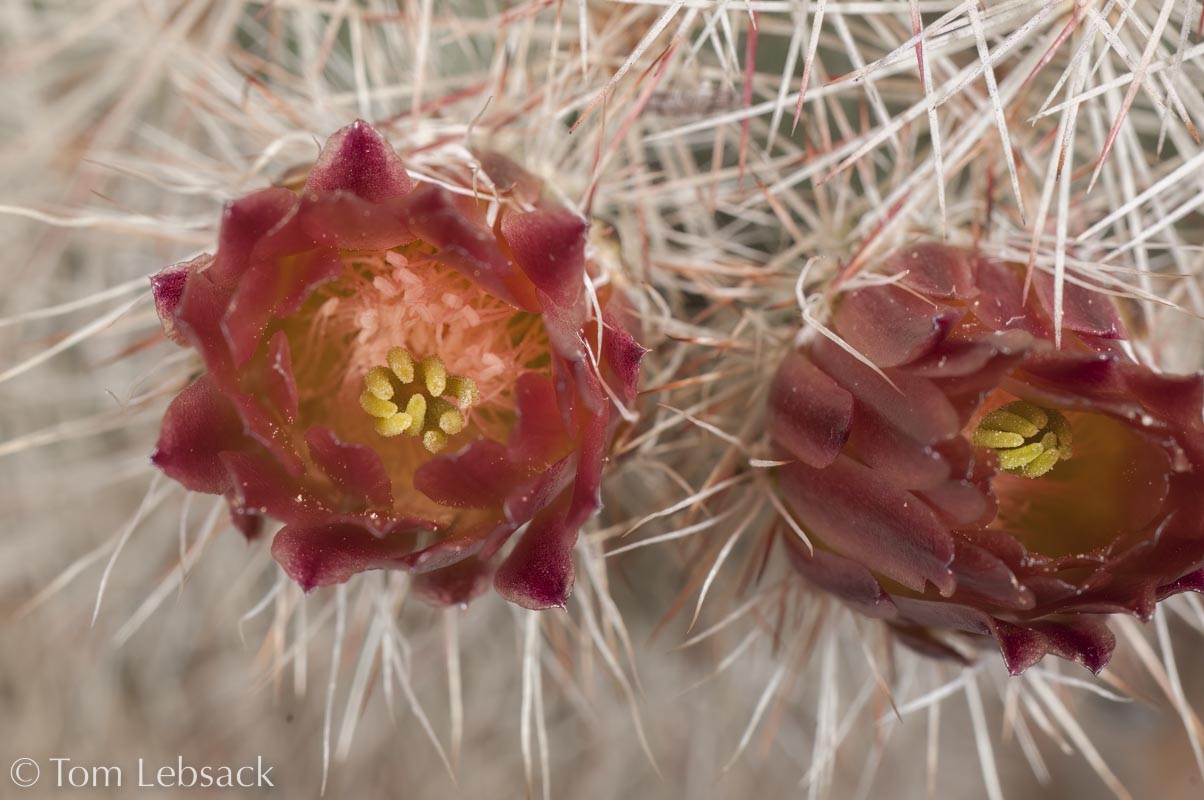Texas Wildbuds
Echinocereus viridiflorus var. russanthus
(Rusty Hedgehog Cactus)
| Scientific Name | Echinocereus viridiflorus var. russanthus (Echinocereus russanthus, Echinocereus russanthus ssp. russanthus) | USDA PLANTS Symbol | ECVIR ECRU4 |
| Common Name | Rusty Hedgehog Cactus | ITIS Taxonomic Serial No. | N/A 51700 |
| Family | Cactaceae (Cactus) | CactiGuide.com Reference | Click Here |
| Description | Habitat: Desert environments; limestone and igneous soils in desert scrub, grasslands and mountains; endemic to Big Bend area from 2300 to 6400 ft. Plant: Cylindrical stems 2 to 10 inches tall and 1-1/2 to 3-1/2 inches across and may be branched at bases densely covered with spines. Pads & Spines: Stems with 12 to 18 ribs; 9 to 12 central spines 3/8 to 1-1/2 inches long and 30 to 45 radial spines 1/3 to 5/8-inch long; reddish brown to blackish or white with darler tips. Inflorescence: Comparatively smaller rusty-red funnel-shaped flowers 3/4 to 1-3/8 inches long growing from the sides of the stems; yellow anthers, pale-yellow style with and 8 to 10 green stigma lobes. Bloom Period: February to April. Fruit: Green to dull red, almost round to oval, 3/8 to 1/2-inch long. References: "Cacti of Texas" by Powell, Weedin and Powell and "Little Big Bend" by Roy Morey. Note: There is some disagreement on the naming of the species. The name used here is that cited by the Powell, Weedin and Powell; Blum suggests E. russanthus ssp. russanthus in his Echinocereus Status Liste. |
BONAP Distribution Map E. russanthus Map Color Key |
Texas Status: Native |
Banner photo of Castilleja indivisa and Lupinus ssp. taken along FM 1323 north of Johnson City, Blanco County
© Tom Lebsack 2025
Every attempt is made to provide accurate, up-to-date, and relevant information, but the completeness or accuracy of any information presented on this website cannot be guaranteed. I use authoritative references to insure high standards of accuracy and review and update the information frequently.






